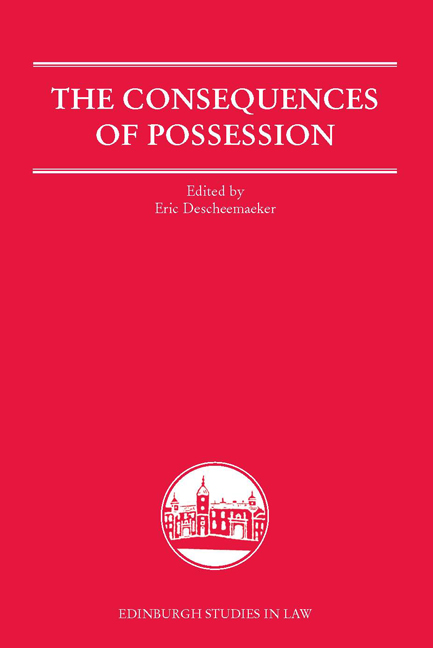Book contents
- Frontmatter
- Contents
- Foreword
- List of Contributors
- Table of Cases
- Table of Statutory Materials
- 1 The Consequences of Possession
- 2 Why Protect Possession?
- 3 Is Possession Factual or Legal?
- 4 Possession as a Source of Property at Common Law
- 5 The Evolution of Possessory Actions in France and Italy
- 6 The Protection of Possession in Scots Law
- 7 Possessio civilissima in Spanish and German Law: Protecting Possession between Fact and Fiction
- 8 Possession of Incorporeals
- 9 The Protection of Quasi-Possession in South African Law
- Index
5 - The Evolution of Possessory Actions in France and Italy
Published online by Cambridge University Press: 07 December 2017
- Frontmatter
- Contents
- Foreword
- List of Contributors
- Table of Cases
- Table of Statutory Materials
- 1 The Consequences of Possession
- 2 Why Protect Possession?
- 3 Is Possession Factual or Legal?
- 4 Possession as a Source of Property at Common Law
- 5 The Evolution of Possessory Actions in France and Italy
- 6 The Protection of Possession in Scots Law
- 7 Possessio civilissima in Spanish and German Law: Protecting Possession between Fact and Fiction
- 8 Possession of Incorporeals
- 9 The Protection of Quasi-Possession in South African Law
- Index
Summary
The Continental systems of possessory protection seem to be different mixtures of the same ingredients: namely, the Roman interdicts, the actions developed for protecting the Germanic Gewere, and the canon law's actio spolii. However, through accidents of history, these same ingredients gave origin to very different systems.
The great divide between systems which require animus domini in order to have possession of a thing, and thus distinguish between possession and detention (for instance France and Italy), and systems which do not consider the intent to possess as owner as an indispensable requirement for possession (for instance Germany) is well known and studied. However, there are important, profound differences between systems which are traditionally seen as quite close. France and Italy, for instance, give different answers to the important question about the extension of possessory protection to movables. As I will try to show, the different legal systems have in a way bent the same arsenal of tools in different directions, so that even intelligibility between two different legal systems is difficult.
It is easy to see some converging lines which seem to be the result of common practical needs. Possessory actions make thus an interesting case study of legal evolution, showing both how different systems are built starting from the same roots and how they can converge to meet the same practical needs.
THE ORIGINS OF POSSESSORY ACTIONS
The possessory remedies in force all over Europe, as we will see, did not have their origins in Roman law. However, since these remedies were often re-read through Roman lenses during the Middle Ages, a first important historical root to be considered is the Roman interdicts. Roman law gave protection to possessors. One who had been dispossessed could recover land by bringing the interdict unde vi. One who had not been dispossessed could bring the interdict uti possidetis against a person who interfered with his possession of land.
- Type
- Chapter
- Information
- The Consequences of Possession , pp. 95 - 110Publisher: Edinburgh University PressPrint publication year: 2014



